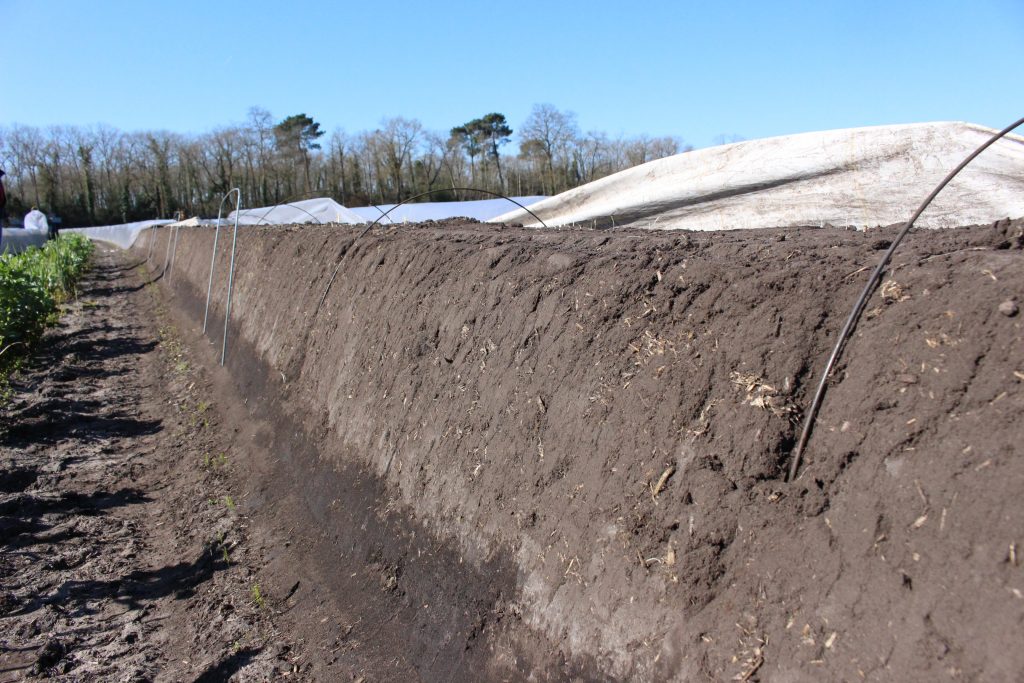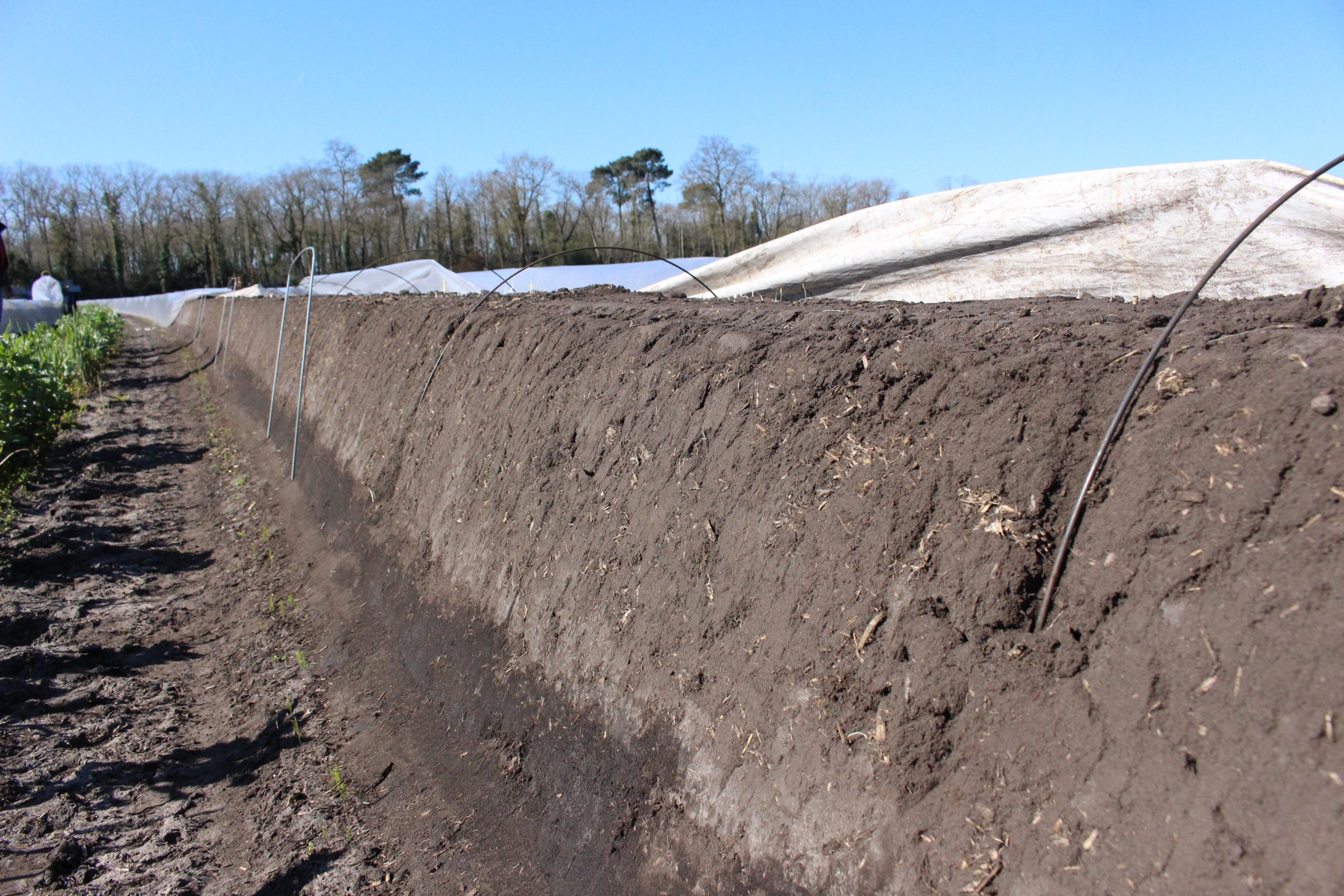Planting asparagus at height
The production potential of an asparagus field is conditional on the volume of good soil available to the root mass of each plant. In a plot, the 0-20 cm horizon is the richest. In soil analyses, it is not surprising to find that this first part of the soil has 3% organic matter, while at a 40-60cm depth, the organic matter rate is only 0.2%. In some cases, the plant will be unable to use this deep horizon because it is too sensitive to rises in the water table or is composed of hard rocks.
Between 25 and 30 cm above ground level
The raised bed technique can respond to different situations. The objective is to take the good earth from across the entire surface area of the plot and bring it back to the ridge. The ridges are spread well apart, at least 3.50 m, and can be 30 cm in height. The planting is therefore done at between 25 and 30 cm above ground level. In this way, the space that can be explored by the roots is twice as large as for a traditional plantation. Also, from the first year of planting, the roots of the young crop find there way down to a depth of 0.70 m because the soil is rich and aerated. Usually, the roots only explore depths of up to 0.50 m. Ridge cropping also allows for natural drainage. Asparagus crowns are always found outside the wet zone during wet and rainy winters or springs.
During the ridging-up of the crop, the earth from the inter-rows is brought in to form ridges of 0.70 m in height. This large volume of soil, directly in contact with the thermal plastic, makes for a faster and more homogeneous warming of the ridge, which is 30-40% higher than normal. The extra heat stored allows for earlier and higher production, according to the ratio of 1oC extra equals a harvest gain of 30 kg per hectare per day during the early period. Ridge cropping also limits the raising of the crowns – the root plateau – which are already located in a comfort zone (aerated soil).
Concentrate moisture at the foot of plants
Growing in raised beds requires a great distance between rows in order to have the maximum amount of soil for the ridge and then for the bed. This constraint then turns into an advantage. In fact, the reduction in the number of rows per hectare means that the density of plants per linear metre has to be increased with a double-row planting. Fewer rows per hectare also brings savings on mulch and hoops and therefore in labour for harvesting and time spent on all maintenance work. The elevation of the beds does not necessarily require specific equipment, but does demand some adaptation of the conventional equipment with modifications that some manufacturers can offer. Tractors must have more ground clearance to allow them to straddle the beds. A higher bed also results in more exposure, resulting in faster drying. Plants will go deeper to look for moisture and compensate for some of this drying out. Localised irrigation is a must in order to concentrate moisture at the foot of the plants. About 10% more input will be required on the row and per hectare. The technique developed in Peru by Christian Befve has now been adopted successfully in Europe, as Philippe Lebourg, an asparagus producer in the south-west of France, testified at the time of the IAD 2019 visits.























